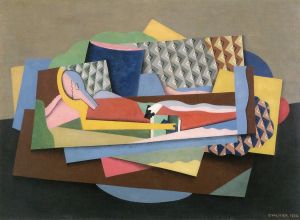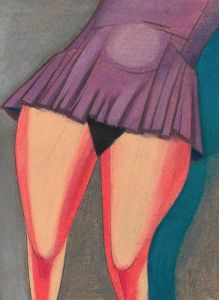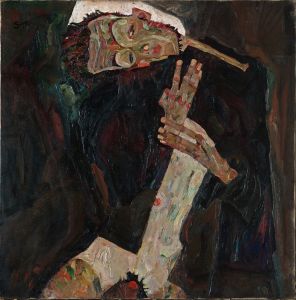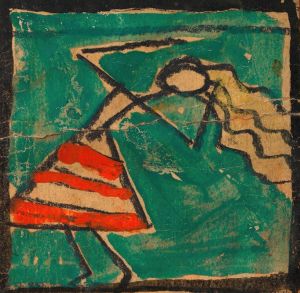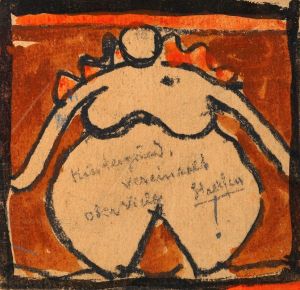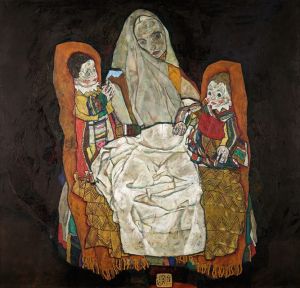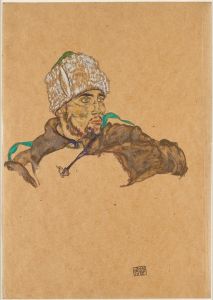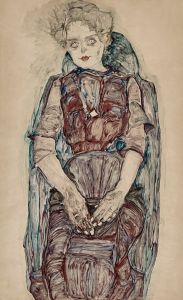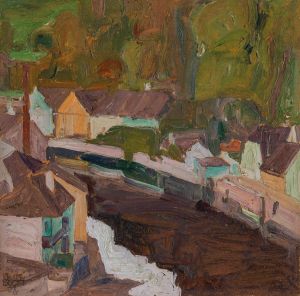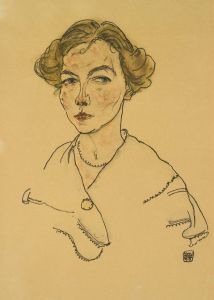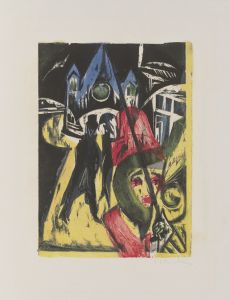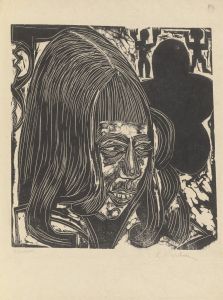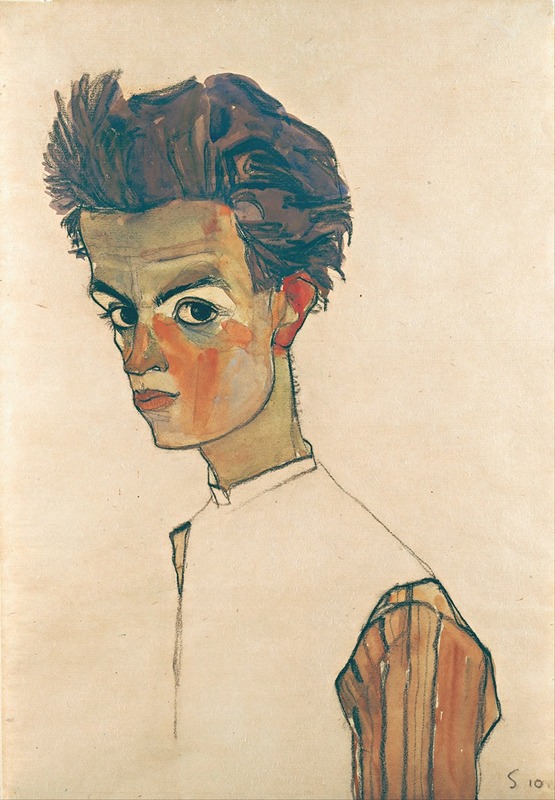
Self-Portrait with Striped Shirt
A hand-painted replica of Egon Schiele’s masterpiece Self-Portrait with Striped Shirt, meticulously crafted by professional artists to capture the true essence of the original. Each piece is created with museum-quality canvas and rare mineral pigments, carefully painted by experienced artists with delicate brushstrokes and rich, layered colors to perfectly recreate the texture of the original artwork. Unlike machine-printed reproductions, this hand-painted version brings the painting to life, infused with the artist’s emotions and skill in every stroke. Whether for personal collection or home decoration, it instantly elevates the artistic atmosphere of any space.
Egon Schiele, an Austrian painter known for his distinctive style and intense expressionism, created "Self-Portrait with Striped Shirt" in 1910. This work is a part of Schiele's extensive series of self-portraits, which are notable for their raw emotional intensity and psychological depth. Schiele's self-portraits often explore themes of identity, existential angst, and the human condition, and this particular piece is no exception.
"Self-Portrait with Striped Shirt" is characterized by Schiele's signature use of bold lines and stark contrasts. The painting depicts Schiele himself, wearing a striped shirt, with his head slightly tilted and his gaze directed towards the viewer. The stripes on the shirt are rendered with a sense of rhythm and movement, which contrasts with the more static and introspective expression on Schiele's face. This juxtaposition highlights the tension between the external appearance and internal emotion, a recurring theme in Schiele's work.
The composition of the painting is relatively simple, yet it is charged with a sense of immediacy and presence. Schiele's use of color is restrained, focusing on earthy tones that add to the somber and contemplative mood of the piece. The background is minimal, which serves to emphasize the figure of Schiele and draw attention to his facial expression and posture. This minimalist approach is typical of Schiele's work during this period, where the focus is on the emotional and psychological aspects of the subject rather than elaborate backgrounds or settings.
Schiele's self-portraits are often seen as a reflection of his personal struggles and his exploration of his own identity. During the time he created "Self-Portrait with Striped Shirt," Schiele was grappling with various personal and professional challenges, including his controversial reputation and the evolving art scene in Vienna. These factors influenced his work, leading to the creation of pieces that are both introspective and provocative.
Egon Schiele was a protégé of Gustav Klimt and was associated with the Vienna Secession, a group of artists who sought to break away from traditional artistic conventions. Schiele's work, however, is marked by a more radical approach, characterized by its raw emotional power and often unsettling subject matter. His self-portraits, including "Self-Portrait with Striped Shirt," are considered some of his most significant contributions to early 20th-century art.
The painting is a testament to Schiele's ability to convey complex emotions and psychological states through his art. His distinctive style, with its emphasis on line, form, and expression, has had a lasting impact on the development of modern art. "Self-Portrait with Striped Shirt" remains an important work within Schiele's oeuvre, exemplifying his unique approach to portraiture and his exploration of the human psyche.
Today, Egon Schiele is recognized as one of the leading figures of Austrian Expressionism, and his works continue to be studied and admired for their emotional depth and innovative style. "Self-Portrait with Striped Shirt" is a compelling example of Schiele's artistic vision and his ability to capture the complexities of human emotion in a way that resonates with viewers even a century after its creation.





